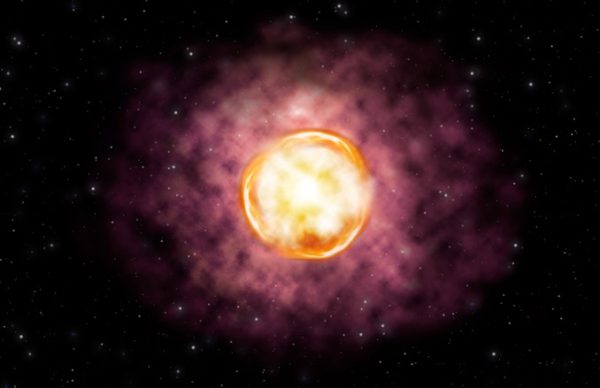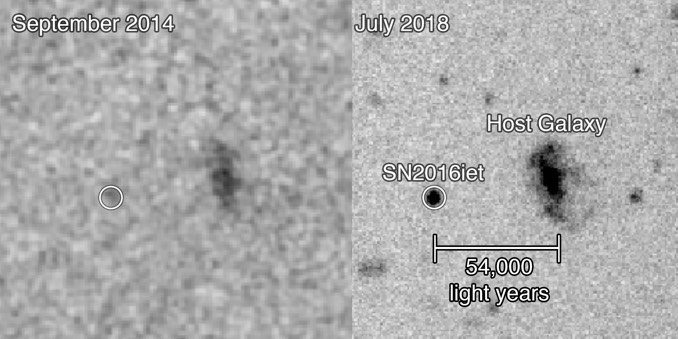A supernova that may shed light on how the first stars died – Astronomy Now Online

Astronomers have found an apparent pair-instability supernova, the explosion of a star 200 times more massive than the Sun in a previously uncharted dwarf galaxy some one billion light years away. It is the most massive star yet found to undergo a supernova blast and may reflect how huge, metal-poor stars that formed in the immediate aftermath of the big bang ended their lives.
But the devil is in the details, and the observations do not exactly match theoretical expectations.
“Everything about this supernova looks different, its change in brightness with time, its spectrum, the galaxy it is located in and even where it’s located within its galaxy,” said Edo Berger, an astronomer at Harvard University and a co-author of a paper in the Astrophysical Journal. “We sometimes see supernovas that are unusual in one respect, but otherwise are normal. This one is unique in every possible way.”
The supernova, catalogued as SN2016iet, was first noticed in 2016 by the European Space Agency’s Gaia satellite. Followup-up studies utilised a variety of instruments, including the CfA/Harvard & Smithsonian’s MMT observatory in Arizona and the Magellan telescopes at the Las Campanas Observatory in Chile.
The progenitor star was located about 54,000 light years from the center of a previously unknown dwarf galaxy in an environment poor in heavier elements.
The star lost about 85 percent of its mass over the past few million years, the researchers say. But in a surprise, they found about half of its remaining mass was lost in the final 10 years of its life. The collision between that material and the debris thrown off in the final detonation led to its unusual appearance and hints that a pair-instability supernova had taken place.

In a pair-instability supernova, massive stars generate so much energy in their cores that high-energy gamma rays can create electron-positron pairs when colliding with atomic nuclei. That reduces the radiation pressure holding the core up against the inward crush of gravity, leading to a partial collapse of the core.
Runaway nuclear reactions then lead to the final collapse in a supernova blast that completely destroys the star, leaving nothing behind in its wake.
“The idea of pair-instability supernovas has been around for decades,” said Berger. “But finally having the first observational example that puts a dying star in the right regime of mass, with the right behaviour, and in a metal-poor dwarf galaxy is an incredible step forward. SN2016iet represents the way in which the most massive stars in the universe, including the first stars, die.”
The researchers plan to continue monitoring SN2016iet, on the lookout for additional clues about its birth and evolution.
“The unexpected part is that the star lost about half its mass in the final decade before the explosion, and then the pair-instability explosion debris plowed into this lost shell of material,” Berger said in an email exchange. “None of the theoretical models of pair-instability explosions predict this behaviour. Ultimately, this is why in astronomy we rely on observational data to make new discoveries.”





